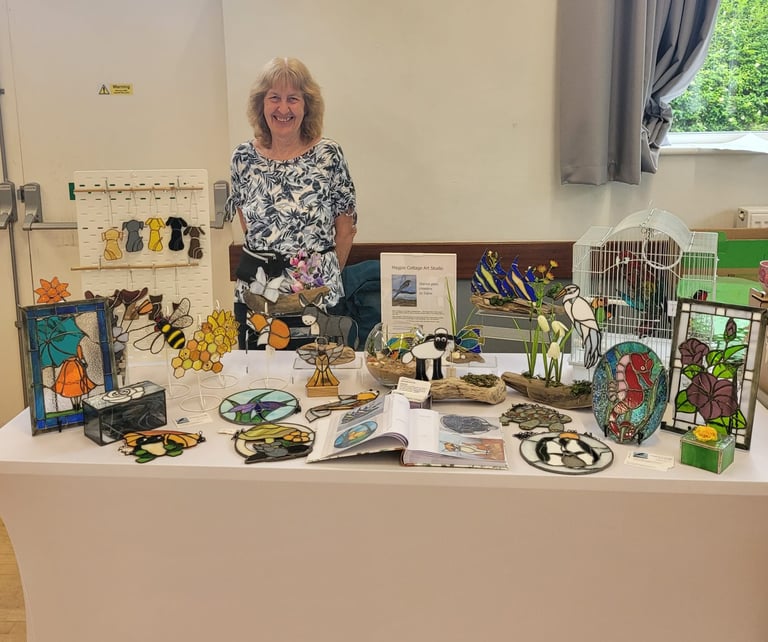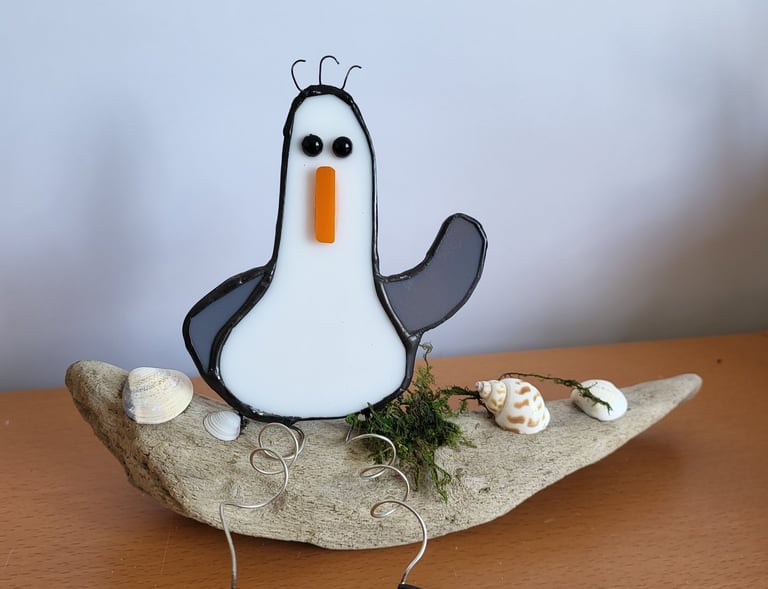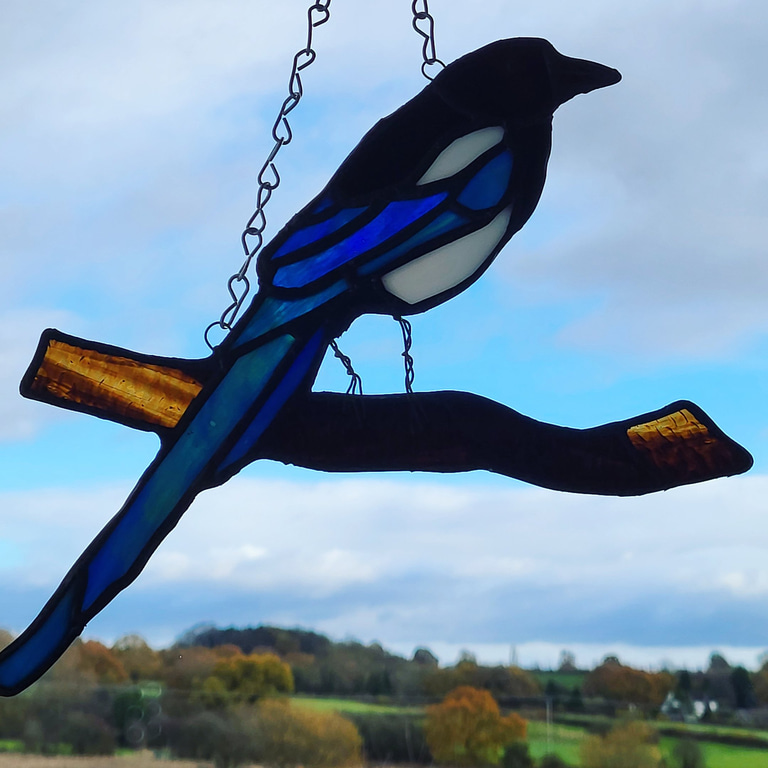About me
Hi, I’m Elaine Franklin and I am a stained glass artist living and working from home in the rural village of Brinsley in Nottinghamshire. My inspiration comes from the natural world around us, in particular animals, birds, insects and marine life.
My style is unique and quirky in that, in addition to ‘traditional suncatchers and panels’ I like to do 3D work using driftwood and other materials or designing trinket and jewellery boxes. All are handmade using The Tiffany copper foil process.
I have always been a creative and practical person, past hobbies have included resin, cross stitch, diamond art, cake decorating, woodwork to mention but a few but once I discovered stained glass that was that.
Though creative practically, I confess I have no imagination when it comes to writing item descriptions, so I have taken the liberty of using AI on the product descriptions in my shop!!
The name Magpie Cottage Art Studio came about from the memory of my mother from whom I inherited my creative side.
I am always happy to make commission pieces, please contact me with your request




The Tiffany copper foil process.
Many people will have heard of Tiffany lamps. These were created by Louis Comfort Tiffany in the 1890s. He started the versatile copper foiling technique that, with development, we use today.
After the glass has been cut and the edges ground smooth, copper tape and solder are used to create a seam joining the pieces of glass together. The edges of glass are wrapped in varying sizes of thin copper foil depending on the glass thickness. The foil covers the entire edge of the glass and about one-sixteenth of the front and back sides.
A liquid flux is then brushed along the seam and the foil is then soldered along the entire joint where it touches another piece of glass. The work is then cleaned to eliminate any remaining flux and the soldier polished to remove any oxidisation. This leaves a silver colour but a chemical liquid called Patina can be added in either black or copper to colour the solder, which can enhance the look of the final finish.
The other technique for stained glass is the traditional lead channel came method. This was the method used for constructing large church windows and is still in use today. It is best suited for designs with larger and simpler shapes.
